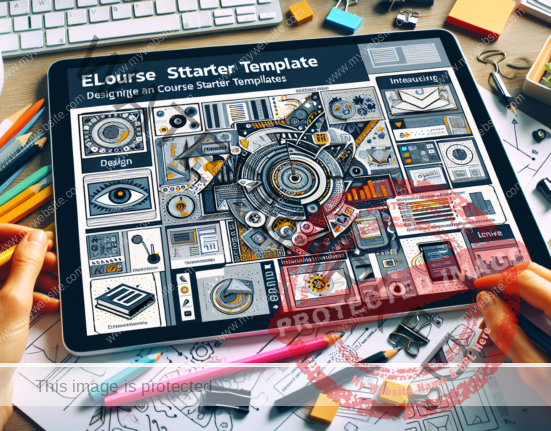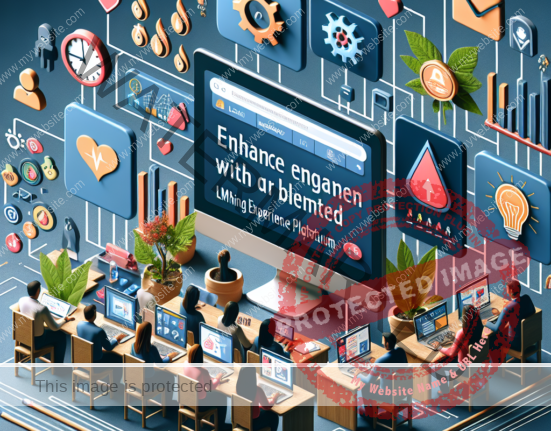Reading Time: 4 minutes
<h2>Exploring the Evolution of Corporate Training</h2>
<p>As a seasoned eLearning developer, I find the transformation of corporate training to be both fascinating and essential for modern enterprises. The article’s assertion that "static, one-size-fits-all training programs are becoming a thing of the past" really resonates with me. In my own practice with tools like Articulate Storyline 360 and Rise, I have noticed a significant shift towards tailored solutions that cater to individual learner needs.</p>
<p>Interactive learning platforms thrive on adapting to the evolving landscape of corporate education. The features that allow for real-time assessments, immersive simulations, and peer collaboration align perfectly with the principles of effective knowledge transfer. For instance, incorporating gamified elements into training modules not only makes the sessions more enjoyable, but it also enhances the retention of information. According to the article, "adaptive learning is central to many of these platforms," and I completely agree. By leveraging AI to adjust content based on learner progress, we are now able to offer a truly personalized experience.</p>
<p>This transformation comes at a crucial time, as the <b><a href="https://www.statista.com/outlook/emo/online-education/online-learning-platforms/worldwide" target="_blank">Statista report</a></b> predicts that the global online learning platforms market is projected to reach $75.52 billion by 2029. As an eLearning developer, it is exciting to think that my work is part of this rapidly expanding industry. Companies that embrace these technologies will undoubtedly gain the competitive edge they need to stay ahead.</p>
<h2>Boosting Employee Performance and Engagement through Interactive Learning</h2>
<p>The article points out that "old-school techniques often fall flat" when it comes to modern training. This statement could not be more accurate. As I've observed firsthand, employees are continually seeking engaging and interactive content that stimulates their minds and encourages active participation. Traditional lectures are giving way to interactive videos, gamification, and hands-on exercises, all of which elevate the learning experience.</p>
<p>When we design courses, the focus should be on making learning feel like a game. Many learners express that they would be more productive if training felt engaging—this is where interactive learning platforms shine. By incorporating elements of fun and competition, we can see a measurable uptick in learner retention rates. This concept of "learning through play" is not just a trendy phrase; it leads directly to better performance and a more engaged workforce.</p>
<p>Moreover, when companies invest in such innovative technologies, they not only enhance individual performance but also foster employee satisfaction and loyalty. As the article suggests, when employees feel that their growth is prioritized, they are more likely to stay committed to the organization. This means that by leveraging interactive learning platforms, we are essentially creating a more attractive workplace, which is crucial for talent retention in today’s competitive market. Companies need to act quickly if they want to maintain their edge, and investing in interactive learning is a clear step in that direction.</p>
<h2>Tackling the Skills Gap with Precision: The Role of Interactive Learning Platforms</h2>
<p>The ongoing skills gap poses a significant challenge for many organizations. Every day, new fields emerge, needing specialized skills in areas like AI and cybersecurity. The article addresses how interactive learning platforms can significantly help in tackling this issue. I cannot overstate the importance of adaptive learning in this context. As eLearning developers, we have the unique opportunity to create customized learning paths that adapt to individual learners’ needs.</p>
<p>For example, if a learner excels in certain areas but struggles in others, adaptive technology enables us to fine-tune the training materials. This approach not only makes our content more effective, but it also saves time, allowing employees to focus on what they truly need to learn. Imagine a scenario where a sales manager is thriving in negotiation but needs extra assistance with data analysis—adaptive learning tools can identify this gap and adjust accordingly, ensuring a more efficient learning experience.</p>
<p>Furthermore, the statistic that a company utilizing adaptive tools trained thousands of employees in cloud computing and machine learning, keeping them ahead of competitors, speaks volumes about the efficacy of these platforms. This reinforces my belief that the future of corporate training lies in personalized, interactive approaches that prioritize skill development tailored to individual capabilities. Companies willing to invest in such dynamism will not only bridge skill gaps more effectively but also enjoy improved organizational performance as a result.</p>
<p>If you're interested in seeing how we at Adam’s eLearning Solutions can help you take advantage of this trend, feel free to check out our <a href="https://an802adam.biz/all-courses/" target="_blank"><b>Prebuilt Courses</b></a> section, where you can find customizable courses that can expedite your training initiatives.</p>
<p>If you would like to read more about this topic, check out the source here: <a href="https://elearningindustry.com/how-interactive-learning-platforms-help-businesses-stay-competitive" target="_blank">Interactive Learning Platforms Help Businesses Stay Competitive</a></p>















